Opinion & Analysis
A pair of Japanese stars emerge on the PGA Tour: Which one will shine brighter?
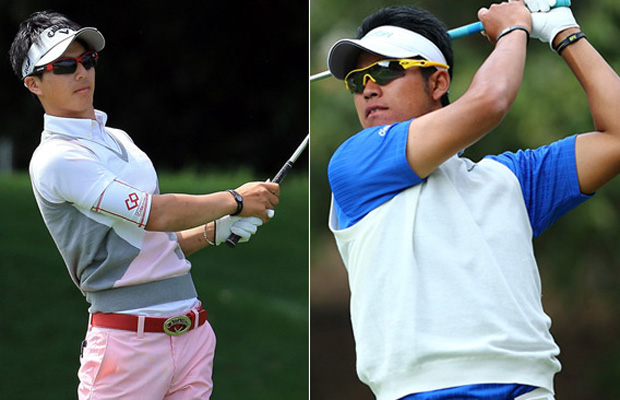
The number of Asian golfers who have played on PGA Tour are few. Of those, the ones who have achieved significant fame are even fewer. With Hideki Matsuyama and Ryo Ishikawa playing concurrent schedules in the U.S., Japan has delivered a pair of young, marketable talents with global appeal. Given the success they’ve had barely into their 20s, it’s natural to speculate on how far can they go and who will go the farthest.
Based on early returns, Matsuyama, 21, is more likely to capitalize on his initial success and could earn his first win on Tour in the 2013-2014 wrap-around season. He began the year ranked No. 128 in the world, but he is now comfortably inside the top 30. Discounting his lone missed cut at the Sony Open in Hawaii in January, Matsuyama’s worst finish on Tour was a tie for 21st at the WGC-Bridgestone Invitational in early August. His consistently strong play carried over into the majors, especially at The Open Championship, where his late-Sunday charge at eventual winner Phil Mickelson raised everyone’s expectations. It also earned him a spot at the Presidents Cup, where just two years ago Ishikawa was making his second-consecutive appearance.
Ishikawa’s professional career has been following a trajectory that should have led to a third Presidents Cup trip this past season. Golf fans have been hearing a lot about his potential for what seems like a long time. Still just 22 years old, he’s been the acclaimed “can’t-miss kid” since his junior days. Back home, Ishikawa has been compared to Tiger Woods — and Brad Pitt — which should give you some idea of his cultural transcendence.
“He came into the sport young and naïve at a time when Japan’s golf industry was lagging behind the world in popularity,” said Dennis Allen, SVP of global business development at the Back9Network. “The LPGA of Japan was more popular than the Japan Golf Tour. And Koreans were beginning to make themselves known on the global stage. He brought a new personality and energy to the sport in Japan.”
Ishikawa didn’t so much step foot into his fame as barrel into it. He won in his first start on the Japan Golf Tour as a 15-year-old amateur in 2007. The following year, he won another event and became the youngest player to reach the top 100 of the Official World Golf Ranking. He followed up his success by winning the tour’s order of merit in 2009 and famously carded a 58 to win The Crowns a year later, the lowest round ever recorded on any major tour.
Ishikawa’s best moments, while notable, have occurred almost entirely on home soil. On the PGA Tour, his record has been equal parts hit and miss. Most American golf fans know of him primarily through his appearances in The Masters, which have all come by way of special invitation and have been negatively received by some critics. Ishikawa himself told reporters earlier this year that he was surprised to have gotten a fifth consecutive invite considering his extensive slide in the world ranking. Like his four previous trips to Augusta, Ishikawa was unable to make a compelling argument that he deserved a spot in the field on merit alone. Perhaps it’s a by-product of trying too hard; very few golfers have been under more media scrutiny or have had to single-handedly carry the torch for their country.
That Ishikawa’s star power has diminished at all is probably a welcome respite. Scenes like the one that happened at his PGA Tour debut at Riviera Country Club, where a mob of Japanese reporters overwhelmed the media center and snapped photos of a television showing Ishikawa being interviewed by an American sports network, reveals much about Japan’s insatiable appetite for all things Ryo.
Andy Yamanaka, an official with the Japan Golf Tour, described Ishikawa as being a near singular influence for generating interest in golf.
“Ryo is the complete package,” Yamanaka said in a 2010 interview. “I’m not sure if it was the same situation with Tiger Woods in the U.S. when he was younger, but I’ve never seen anyone like Ryo in terms of his potential as an international athlete.”
Matsuyama, only a year younger than Ishikawa, hasn’t had to deal with the same media obligations or scrutiny by virtue of his more conventional path through the amateur ranks. A collegiate player at Tohoku Fukushi University in Sendai, the golf world first took notice of Matsuyama in 2010 when his victory at the Asia-Pacific Amateur Championship earned him an automatic invite to The Masters. He was the first Japanese amateur to compete at Augusta, and he took low-am honors that year. He followed that up by successfully defending his Asia-Pacific crown, but was unable to overtake 20-year-old Patrick Cantlay to repeat as low amateur champion.
Beyond that, there was a spell of almost two years where very little else was reported other than his win at the Japan Collegiate Championship in 2012 or his ascension to the top of the World Amateur Golf Ranking — both quality achievements.
But that was then. To say that Matsuyama’s last 10 months have been good would be devastatingly modest.
“His ascent to the top has been meteoric by any standard,” Allen said. “No one saw this coming.”
Within the past year and a half, Matsuyama has vaulted up the rankings, going from 210th in the world to 29th. He also bagged three wins in Japan to go along with his stellar play on the PGA Tour.
For Japanese reporters, Matsuyama was clearly the main draw at the Frys.com Open where he finished tied for third. Playing 40 minutes apart during the opening round, two-thirds of the Japanese media had left Ishikawa to follow Matsuyama by the time his fellow countryman arrived to the first tee.
“Until last year, there was just one player for Japanese media to cover. Now we have two,” Sonoko Funakoshi, a writer for Jiji press, said in an interview. “Results wise, Matsuyama has performed better [recently] so he is getting more exposure. If the results change, then Ishikawa will receive more attention.”
What the Japanese have, much to their glee, is a pretty darn good rivalry that doesn’t need help in the form of a media pep rally to sell it. Matsuyama, who just turned pro this past year, has been seemingly unfazed by his new-found stardom and the expectations that come with it.
Whether it’s representing his country at the Presidents Cup or having to be paired with Tiger Woods at Firestone, who was making a run at shooting 59, Matsuyama exudes poise. He has a swing that matches his personality — smooth and calm, with a slight pause at the top as if to say, what’s the hurry.
At 5-foot-11 and 180 pounds, Matsuyama can fill out a golf shirt. His broad, athletic physique is consistent with today’s modern golfer, but he’s not a bomber off the tee. By comparison, the straw-thin Ishikawa actually gets a few extra yards off the tee with his lower, more piercing ball flight.
The key to Matsuyama’s game is accuracy, not distance. Put an iron or wedge in his hand and he turns golf into a game of darts. He ranked No. 1 on the PGA Tour in approach distance from 50 to 125 yards, and was inside the top 10 in four other distance stats. He also led the Tour in GIR percentage in three separate categories. His game is remarkably similar to that of Henrik Stenson, who like Matsuyama, is an average, but streaky putter and who leans on phenomenal ball striking to set up good scoring chances.
Statistics also tell us that Matsuyama’s a closer. His 68.33 final-round scoring average ranked second on Tour and was two strokes lower than his pre-cut average. As for Ishikawa, his final-round average of 72.25 (71.64 overall) reflected the struggles he went through in his first full season on the PGA Tour.
Ishikawa’s disappointing 2013 season can be summed up this way — expectations, both from Ryo and new equipment sponsor Callaway, were higher.
Shoji Akihisa, vice president of sales and marketing for Callaway’s Japan division, said Ishikawa has had trouble adapting to course conditions in the United States.
“He has struggled mainly with adjusting to different grass surfaces and course layouts and it has affected his short game and putting,” Akihisa said. “It takes time to make those adjustments and there’s a learning curve.”
Ishikawa’s 53.27 percentage in scrambling was 160th on Tour and in another key statistic, strokes gained putting, he ranked even lower. Highlights for the Japanese star were few; he recorded a single top-10 finish in 23 starts and failed to earn enough money to remain fully exempt on Tour.
His detractors are quick to point out that the accolades he’s received in his young career have exceeded the results. It’s also been perceived that Ishikawa, who has been worshipped like a rock star in Japan since his teenage years, is unaccustomed to dealing with hardship.
It’s easy for critics to slap a label based on the results of his scorecards; they don’t see the sweat equity. They don’t see Ishikawa, who bought a home in San Diego in the offseason, grinding at the Ely Callaway Performance Center on his off weeks.
“We have a driving range down there and in indoor putting lab,” said Scott Goryl, senior manager of global communications at Callaway. “It was originally built as an extension of our R&D facility at headquarters. Ryo bought a house nearby and accesses it whenever he likes to practice. Phil Mickelson does this as well. He lives 15 minutes away and he comes in quite a bit to tweak his clubs and try out new products.”
Ishikawa told reporters back in March that “Japanese people are watching me all the time.”
“The biggest thing this year is to keep my Tour card,” he said. “They want me to be a Tour player next year.”
Ishikawa’s demanding 2013 schedule included 24 tournaments. It would’ve been exceedingly easy for him to rest up the remainder of the year and bank on his name and global appeal to cobble together a 2014 schedule heavy on sponsor exemptions. Instead, a humbled Ishikawa made it a point to regain his Tour card, competing in the Web.com Tour playoffs where he finished comfortably inside the top 25. His success in the playoffs has carried over into the new season where he’s earned more money in two starts than all of last season combined. And it has people talking about his play, rather than his much-ballyhooed contract with Callaway signed at the start of the year.
Ishikawa had been on Callaway’s radar since he was a promising junior using one of its Odyssey putters. When his long-term arrangement with Yonex expired, Ishikawa had a number of suitors that reportedly included Srixon and Nike. Yonex, of course, held an advantage over everyone, based on Ishikawa’s familiarity with them. But Callaway was persistent, at one point even sending out Allan Hocknell, senior vice president of research and development, and chief club designer Roger Cleveland to a remote course north of Tokyo to play nine holes with Ishikawa and talk shop.
When negotiations concluded, Ishikawa scored a record multi-year deal worth an estimated 600 million yen ($6.8 million) per year, easily eclipsing Ishikawa’s five-year commitment to Yonex that was worth one billion yen during the life of the contract.
For Callaway, the Ishikawa signing was part of a multi-pronged strategy to reinvigorate the brand with younger, hipper talent and to increase its leverage in Asia.
“They are going through a complete revamp of their business model and brand; it’s part of a broader global strategy,” said the Back9Network’s Allen. “They needed new blood to attract different demographics. And one country that they had always done well in over the past two decades was Japan. So it’s not surprising that they picked a young, vibrant, Japanese pro to be their poster boy.”
Japan, which has 2,350 golf courses and close to 9 million active golfers, is the second-largest market after the U.S. for demand. According to Callaway’s Akihisa, the signing of Ishikawa is all about increasing momentum, both in Japan, as well as in China and Korea. In terms of dividends, Callaway’s 2013 first quarter net sales in Japan were up 4 percent over a year ago and were even higher for the rest of Asia (12 percent).
Ishikawa’s equipment contract with Callaway naturally includes apparel, hats, gloves and footwear. His global ambassadorship and distinct sense of style is in itself a marketable attribute that Callaway has leveraged for its premium apparel line that is distributed by Sanei, a licensing partner it has worked with since 2002.
Working with Ishikawa since last October, Callaway and Sanei have fashioned a look that is distinctly vibrant, youthful and brash — qualities Callaway hasn’t been traditionally known for, especially in the United States.
“In Japan, we have a different approach in terms of apparel,” Akihisa said. “It’s a different style and a different price point than what we offer in the U.S.”
To help Ishikawa with his daily itinerary on Tour, Callaway appointed Kenji Shimada to travel with him. Shimada is responsible for fine tuning his equipment, coordinating his outfits, supervising photo shoots and pretty much anything else that might come up. Normally, an agent might handle some of these responsibilities, but certainly not a rep from an equipment manufacturer.
“It’s a unique situation in that there’s somebody traveling with Ryo on the PGA Tour this year to make sure his equipment is dialed in,” Goryl said. “And there’s a practice facility available to him near his home in Southern California. That is all new. I wouldn’t call it an experiment necessarily, but this is uncharted territory for us. It’s probably too early to tell if this turns into a blueprint [for how other signees are treated], but we’re definitely looking for young, talented players with global appeal.”
Callaway’s relationship with Ishikawa is unprecedented, some would even call it extravagant. But it could signal a trend in the industry as equipment companies seek to lock up deals with the next wave of talent hailing from Asia.
“These guys are heroes in their own countries regardless of what they do on the global stage, so the contracts are paid for by sales increases in Japan and China alone,” Allen said.
The best thing to happen to Ishikawa, who has yet to break through and win on the PGA Tour, could be Matsuyama and vice versa. Both players will push each other; it’s a case of pride — both personal and national. It’s good to see a chafed Ishikawa follow up Matsuyama’s strong performance at the Frys.com Open by tying his own career-best finish at the Shriners Hospital for Children Open in Las Vegas just a week later. He’s going to have to demonstrate some consistently strong play during the coming season if he wants to argue his case for being the best young Asian player on Tour. For now, it appears that Matsuyama has a lock on that title.
It will be exciting to watch how their careers unfold during the next decade and measure the influence they’ll have on the next generation of Asian golfers. Consider the impact Se Ri Pak had in South Korea after winning the LPGA Championship as a 22-year-old in 1998. Pak was the lone Korean player on tour at the time. By 2009, there were 47 players who collectively won more than one-third of the events. On the PGA Tour, veteran K.J. Choi ended up paving the way for Y.E. Yang, Seung-yul Noh and Sang-Moon Bae.
What will the Tour look like in another 10 years? Don’t be surprised if Matsuyama and Ishikawa provide those answers.
- LIKE0
- LEGIT0
- WOW0
- LOL0
- IDHT0
- FLOP0
- OB0
- SHANK0
19th Hole
Vincenzi’s 2024 Zurich Classic of New Orleans betting preview

The PGA TOUR heads to New Orleans to play the 2023 Zurich Classic of New Orleans. In a welcome change from the usual stroke play, the Zurich Classic is a team event. On Thursday and Saturday, the teams play best ball, and on Friday and Sunday the teams play alternate shot.
TPC Louisiana is a par 72 that measures 7,425 yards. The course features some short par 4s and plenty of water and bunkers, which makes for a lot of exciting risk/reward scenarios for competitors. Pete Dye designed the course in 2004 specifically for the Zurich Classic, although the event didn’t make its debut until 2007 because of Hurricane Katrina.
Coming off of the Masters and a signature event in consecutive weeks, the field this week is a step down, and understandably so. Many of the world’s top players will be using this time to rest after a busy stretch.
However, there are some interesting teams this season with some stars making surprise appearances in the team event. Some notable teams include Patrick Cantlay and Xander Schauffele, Rory McIlroy and Shane Lowry, Collin Morikawa and Kurt Kitayama, Will Zalatoris and Sahith Theegala as well as a few Canadian teams, Nick Taylor and Adam Hadwin and Taylor Pendrith and Corey Conners.
Past Winners at TPC Louisiana
- 2023: Riley/Hardy (-30)
- 2022: Cantlay/Schauffele (-29)
- 2021: Leishman/Smith (-20)
- 2019: Palmer/Rahm (-26)
- 2018: Horschel/Piercy (-22)
- 2017: Blixt/Smith (-27)
2024 Zurich Classic of New Orleans Picks
Tom Hoge/Maverick McNealy +2500 (DraftKings)
Tom Hoge is coming off of a solid T18 finish at the RBC Heritage and finished T13 at last year’s Zurich Classic alongside Harris English.
This season, Hoge is having one of his best years on Tour in terms of Strokes Gained: Approach. In his last 24 rounds, the only player to top him on the category is Scottie Scheffler. Hoge has been solid on Pete Dye designs, ranking 28th in the field over his past 36 rounds.
McNealy is also having a solid season. He’s finished T6 at the Waste Management Phoenix Open and T9 at the PLAYERS Championship. He recently started working with world renowned swing coach, Butch Harmon, and its seemingly paid dividends in 2024.
Keith Mitchell/Joel Dahmen +4000 (DraftKings)
Keith Mitchell is having a fantastic season, finishing in the top-20 of five of his past seven starts on Tour. Most recently, Mitchell finished T14 at the Valero Texas Open and gained a whopping 6.0 strokes off the tee. He finished 6th at last year’s Zurich Classic.
Joel Dahmen is having a resurgent year and has been dialed in with his irons. He also has a T11 finish at the PLAYERS Championship at TPC Sawgrass which is another Pete Dye track. With Mitchell’s length and Dahmen’s ability to put it close with his short irons, the Mitchell/Dahmen combination will be dangerous this week.
Taylor Moore/Matt NeSmith +6500 (DraftKings)
Taylor Moore has quickly developed into one of the more consistent players on Tour. He’s finished in the top-20 in three of his past four starts, including a very impressive showing at The Masters, finishing T20. He’s also finished T4 at this event in consecutive seasons alongside Matt NeSmith.
NeSmith isn’t having a great 2024, but has seemed to elevate his game in this format. He finished T26 at Pete Dye’s TPC Sawgrass, which gives the 30-year-old something to build off of. NeSmith is also a great putter on Bermudagrass, which could help elevate Moore’s ball striking prowess.
- LIKE8
- LEGIT3
- WOW1
- LOL1
- IDHT0
- FLOP3
- OB1
- SHANK1
19th Hole
Vincenzi’s 2024 LIV Adelaide betting preview: Cam Smith ready for big week down under
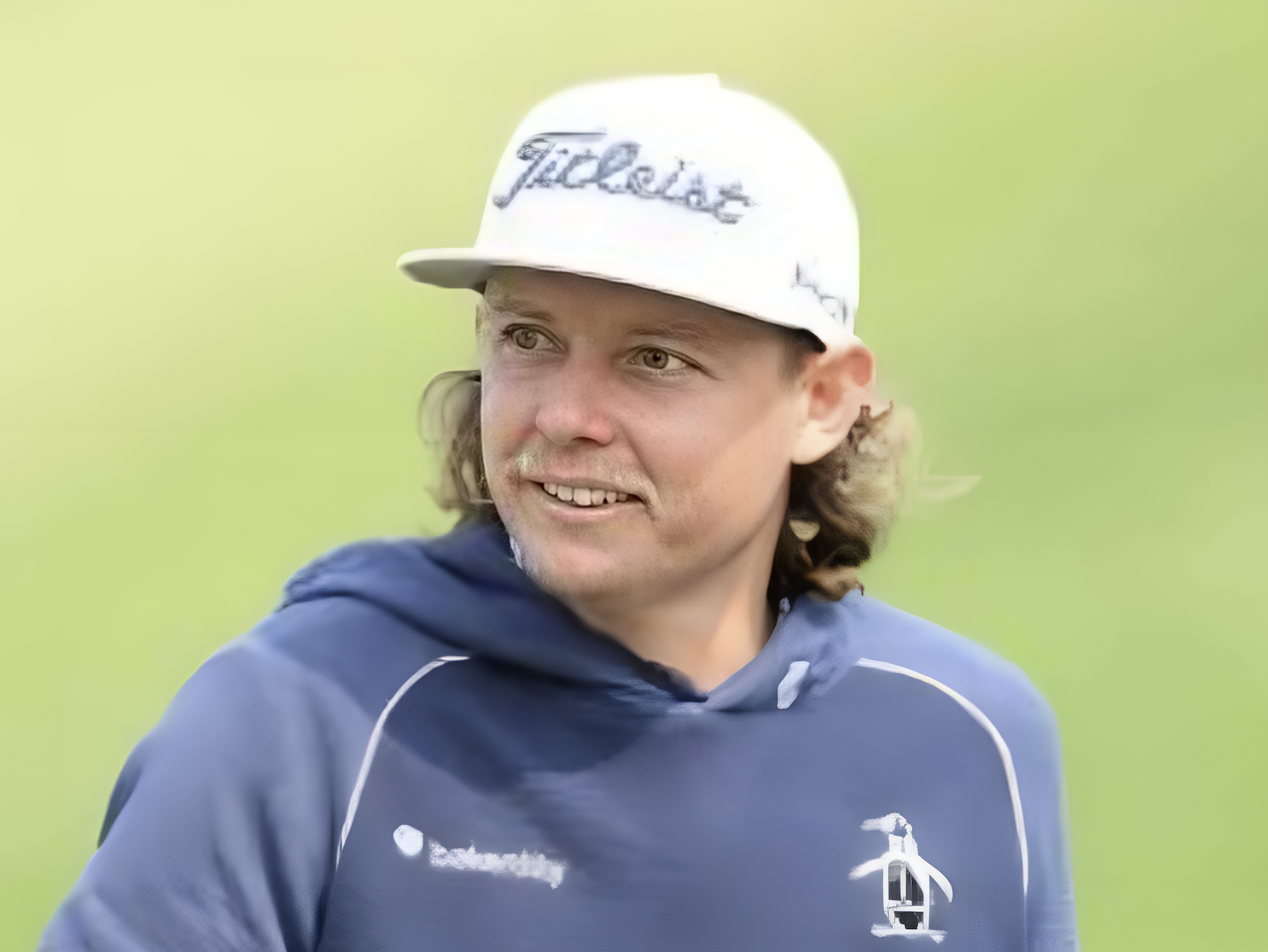
After having four of the top twelve players on the leaderboard at The Masters, LIV Golf is set for their fifth event of the season: LIV Adelaide.
For both LIV fans and golf fans in Australia, LIV Adelaide is one of the most anticipated events of the year. With 35,000 people expected to attend each day of the tournament, the Grange Golf Club will be crawling with fans who are passionate about the sport of golf. The 12th hole, better known as “the watering hole”, is sure to have the rowdiest of the fans cheering after a long day of drinking some Leishman Lager.
The Grange Golf Club is a par-72 that measures 6,946 yards. The course features minimal resistance, as golfers went extremely low last season. In 2023, Talor Gooch shot consecutive rounds of 62 on Thursday and Friday, giving himself a gigantic cushion heading into championship Sunday. Things got tight for a while, but in the end, the Oklahoma State product was able to hold off The Crushers’ Anirban Lahiri for a three-shot victory.
The Four Aces won the team competition with the Range Goats finishing second.
*All Images Courtesy of LIV Golf*
Past Winners at LIV Adelaide
- 2023: Talor Gooch (-19)
Stat Leaders Through LIV Miami
Green in Regulation
- Richard Bland
- Jon Rahm
- Paul Casey
Fairways Hit
- Abraham Ancer
- Graeme McDowell
- Henrik Stenson
Driving Distance
- Bryson DeChambeau
- Joaquin Niemann
- Dean Burmester
Putting
- Cameron Smith
- Louis Oosthuizen
- Matt Jones
2024 LIV Adelaide Picks
Cameron Smith +1400 (DraftKings)
When I pulled up the odds for LIV Adelaide, I was more than a little surprised to see multiple golfers listed ahead of Cameron Smith on the betting board. A few starts ago, Cam finished runner-up at LIV Hong Kong, which is a golf course that absolutely suits his eye. Augusta National in another course that Smith could roll out of bed and finish in the top-ten at, and he did so two weeks ago at The Masters, finishing T6.
At Augusta, he gained strokes on the field on approach, off the tee (slightly), and of course, around the green and putting. Smith able to get in the mix at a major championship despite coming into the week feeling under the weather tells me that his game is once again rounding into form.
The Grange Golf Club is another course that undoubtedly suits the Australian. Smith is obviously incredibly comfortable playing in front of the Aussie faithful and has won three Australian PGA Championship’s. The course is very short and will allow Smith to play conservative off the tee, mitigating his most glaring weakness. With birdies available all over the golf course, there’s a chance the event turns into a putting contest, and there’s no one on the planet I’d rather have in one of those than Cam Smith.
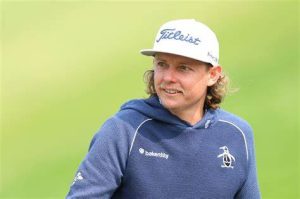
Louis Oosthuizen +2200 (DraftKings)
Louis Oosthuizen has simply been one of the best players on LIV in the 2024 seas0n. The South African has finished in the top-10 on the LIV leaderboard in three of his five starts, with his best coming in Jeddah, where he finished T2. Perhaps more impressively, Oosthuizen finished T7 at LIV Miami, which took place at Doral’s “Blue Monster”, an absolutely massive golf course. Given that Louis is on the shorter side in terms of distance off the tee, his ability to play well in Miami shows how dialed he is with the irons this season.
In addition to the LIV finishes, Oosthuizen won back-to-back starts on the DP World Tour in December at the Alfred Dunhill Championship and the Mauritus Open. He also finished runner-up at the end of February in the International Series Oman. The 41-year-old has been one of the most consistent performers of 2024, regardless of tour.
For the season, Louis ranks 4th on LIV in birdies made, T9 in fairways hit and first in putting. He ranks 32nd in driving distance, but that won’t be an issue at this short course. Last season, he finished T11 at the event, but was in decent position going into the final round but fell back after shooting 70 while the rest of the field went low. This season, Oosthuizen comes into the event in peak form, and the course should be a perfect fit for his smooth swing and hot putter this week.
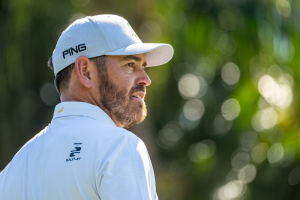
- LIKE12
- LEGIT3
- WOW1
- LOL1
- IDHT0
- FLOP1
- OB1
- SHANK1
Opinion & Analysis
The Wedge Guy: What really makes a wedge work? Part 1
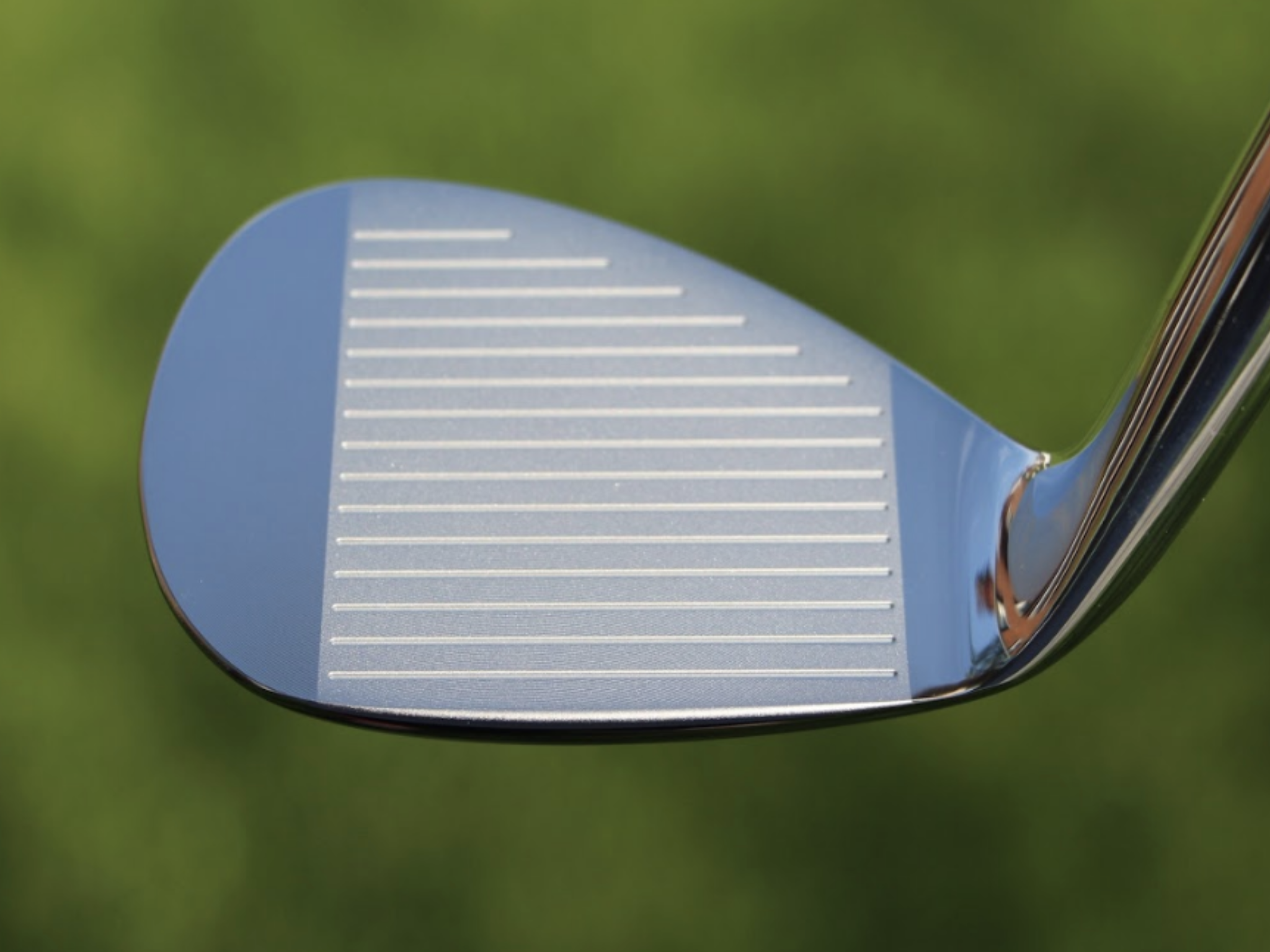
Of all the clubs in our bags, wedges are almost always the simplest in construction and, therefore, the easiest to analyze what might make one work differently from another if you know what to look for.
Wedges are a lot less mysterious than drivers, of course, as the major brands are working with a lot of “pixie dust” inside these modern marvels. That’s carrying over more to irons now, with so many new models featuring internal multi-material technologies, and almost all of them having a “badge” or insert in the back to allow more complex graphics while hiding the actual distribution of mass.
But when it comes to wedges, most on the market today are still single pieces of molded steel, either cast or forged into that shape. So, if you look closely at where the mass is distributed, it’s pretty clear how that wedge is going to perform.
To start, because of their wider soles, the majority of the mass of almost any wedge is along the bottom third of the clubhead. So, the best wedge shots are always those hit between the 2nd and 5th grooves so that more mass is directly behind that impact. Elite tour professionals practice incessantly to learn to do that consistently, wearing out a spot about the size of a penny right there. If impact moves higher than that, the face is dramatically thinner, so smash factor is compromised significantly, which reduces the overall distance the ball will fly.
Every one of us, tour players included, knows that maddening shot that we feel a bit high on the face and it doesn’t go anywhere, it’s not your fault.
If your wedges show a wear pattern the size of a silver dollar, and centered above the 3rd or 4th groove, you are not getting anywhere near the same performance from shot to shot. Robot testing proves impact even two to three grooves higher in the face can cause distance loss of up to 35 to 55 feet with modern ‘tour design’ wedges.
In addition, as impact moves above the center of mass, the golf club principle of gear effect causes the ball to fly higher with less spin. Think of modern drivers for a minute. The “holy grail” of driving is high launch and low spin, and the driver engineers are pulling out all stops to get the mass as low in the clubhead as possible to optimize this combination.
Where is all the mass in your wedges? Low. So, disregarding the higher lofts, wedges “want” to launch the ball high with low spin – exactly the opposite of what good wedge play requires penetrating ball flight with high spin.
While almost all major brand wedges have begun putting a tiny bit more thickness in the top portion of the clubhead, conventional and modern ‘tour design’ wedges perform pretty much like they always have. Elite players learn to hit those crisp, spinny penetrating wedge shots by spending lots of practice time learning to consistently make contact low in the face.
So, what about grooves and face texture?
Grooves on any club can only do so much, and no one has any material advantage here. The USGA tightly defines what we manufacturers can do with grooves and face texture, and modern manufacturing techniques allow all of us to push those limits ever closer. And we all do. End of story.
Then there’s the topic of bounce and grinds, the most complex and confusing part of the wedge formula. Many top brands offer a complex array of sole configurations, all of them admittedly specialized to a particular kind of lie or turf conditions, and/or a particular divot pattern.
But if you don’t play the same turf all the time, and make the same size divot on every swing, how would you ever figure this out?
The only way is to take any wedge you are considering and play it a few rounds, hitting all the shots you face and observing the results. There’s simply no other way.
So, hopefully this will inspire a lively conversation in our comments section, and I’ll chime in to answer any questions you might have.
And next week, I’ll dive into the rest of the wedge formula. Yes, shafts, grips and specifications are essential, too.
- LIKE33
- LEGIT7
- WOW1
- LOL1
- IDHT2
- FLOP3
- OB1
- SHANK3
-

 19th Hole2 weeks ago
19th Hole2 weeks agoDave Portnoy places monstrous outright bet for the 2024 Masters
-

 19th Hole3 days ago
19th Hole3 days agoJustin Thomas on the equipment choice of Scottie Scheffler that he thinks is ‘weird’
-

 19th Hole2 weeks ago
19th Hole2 weeks agoTiger Woods arrives at 2024 Masters equipped with a putter that may surprise you
-

 19th Hole3 days ago
19th Hole3 days ago‘Absolutely crazy’ – Major champ lays into Patrick Cantlay over his decision on final hole of RBC Heritage
-

 19th Hole2 weeks ago
19th Hole2 weeks agoTwo star names reportedly blanked Jon Rahm all week at the Masters
-

 19th Hole1 week ago
19th Hole1 week agoReport: LIV Golf identifies latest star name they hope to sign to breakaway tour
-

 19th Hole1 week ago
19th Hole1 week agoNeal Shipley presser ends in awkward fashion after reporter claims Tiger handed him note on 8th fairway
-

 19th Hole1 week ago
19th Hole1 week agoBrandel Chamblee has ‘no doubt’ who started the McIlroy/LIV rumor and why

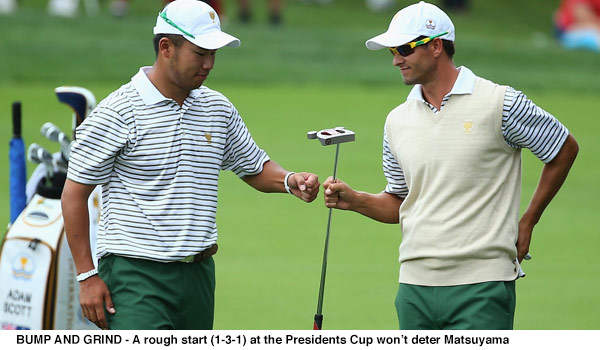
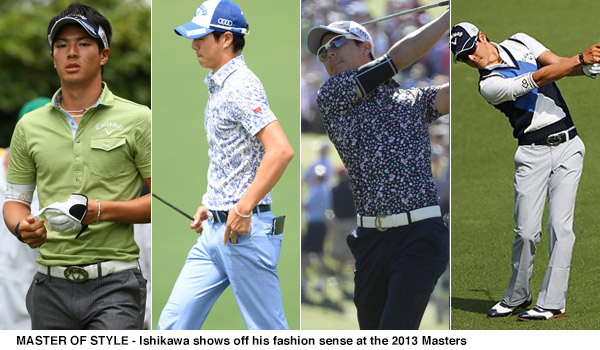
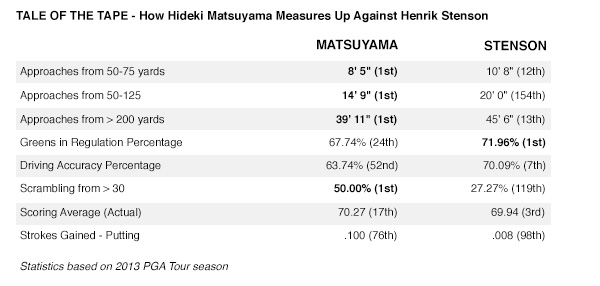




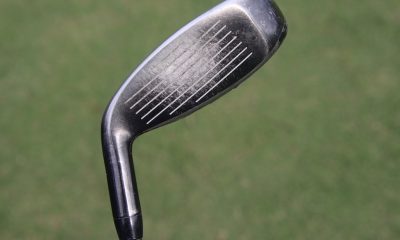

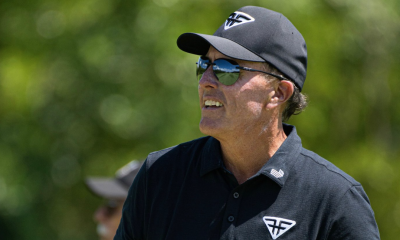



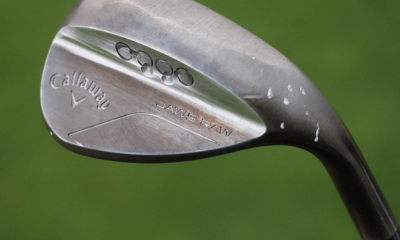








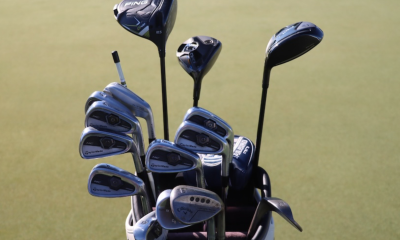

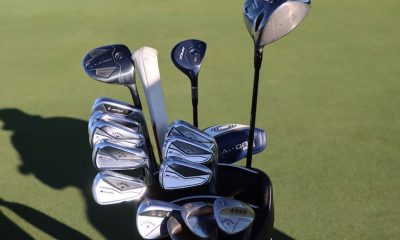





Robert
Dec 10, 2013 at 8:50 am
Working here in Tokyo in the media,I can say Ishikawa is NOT the rock star the media makes him out to be at all.Most younger Japanese have little knowledge of him or golf.Basically he was a created idol.Not to doubt his ability though on Japanese courses,but the lack of competition here made him a flat track bully.He’s very introverted and not the ‘Brad Pitt ‘ the Japanese media want him to be.I wish they would give him a break.
Rusty Cage
Nov 8, 2013 at 8:19 pm
It was interesting listening in on some of the banter between Ryo and his caddie at the Shriners. Clearly he doesn’t need an interpreter anymore.
Scott
Nov 8, 2013 at 6:22 pm
Best thing to happen to Ryo is his new caddy! Simon Clarke from Melbourne. Simon is one of the worlds best caddies.
tyler
Nov 8, 2013 at 1:54 pm
Ryo has game but is overrated IMO. His flamboyance makes him appealing but he really hasn’t done anything in the States. Callaway pretty much rolled out the red carpet for him and I guess I can understand why.